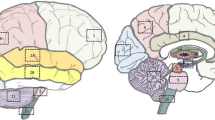Abstract
The purpose of this study was to determine the extent of aluminum (Al) accumulation in the human aorta and cerebral arteries. The Al contents in the aortae and in the cerebral arteries from 23 human subjects was determined by inductively coupled plasma atomic emission spectrophotometry (ICP-AES). The subjects' age range was 45–99-yr-old; 15 of the subjects were males and 8 were females. Al was detected in twelve aortae and in six cerebral arteries, when the entire specimen was analyzed. Two specimens where Al was found in the cerebral arteries contained no Al in the aorta. No relationship to the subject's sex was found. When related to age, two groups were established. Group L (45–75 yr old) and group H (>75 yr old), which exhibited aortal Al concentrations of 33.3 and 72.7%, respectively. When the aortic wall was dissected into the tunica intima, media, and adventitia, Al was found mainly in the tunica media. In the aorta, significant relationships were found between Al and phosphorus (P) levels (r=0.801,p<0.01) and between Al and calcium (Ca) (r=0.661,p<0.05). We have concluded that Al accumulation is age-dependent and that it occurs both in the aorta and in the cerebral artery. In the aorta, accumulation occurs mainly in the tunica media. Both P and Ca appear to enhance aortal Al accumulation.
Similar content being viewed by others
References
K. Tennakone and S. Wickrammanayake, Aluminum leaching from cooking utensils,Nature 325, 202 (1987).
G. B. van der Voet, A. E. Brandsma, E. Heijink, and P. A. de Wolff, Accumulation of aluminium in rat liver: association with constituents of the cytosol.Pharmacol. Toxicol. 70, 173–176 (1992).
A. Radunivic and M. W. B. Bradbury, Determination of aluminum in different tissues of the rat by atomic absorption spectrometry with electrothermal atomization,Analyst 118, 533–536 (1993).
A. Taylor and A. W. Walker, Measurement of aluminium in clinical samples,Ann. Clin. Biochem. 29, 337–389 (1992).
H. L. Elliott, F. Dryburgh, G. S. Fell, S. Sabet, and A. I. Macdougall, Aluminium toxicity during regular hæmodialysis.Br. Med. J. 1, 1101–1103 (1978).
D. P. Perl and A. R. Brody, Alzheimer's disease: X-ray spectrometric evidence of aluminum accumulation in neurofibrillary tangle-bearing neurons.Science 208, 297–299 (1980).
P. W. Manthy, J. R. Gilardi, W. Rogers, E. DeMaster, C. J. Allen, E. R. Stimson, and J. E. Maggio, Aluminum, iron and zinc ions promote aggregation of physiological concentrations of beta-amyloid peptide.J. Neurochem. 61, 1171–1174 (1993).
R. W. Shin, V. M. Lee, and J. Q. Trojanowski, Aluminum modifies the properties of Alzheimer's disease PHF t-proteinsin vivo andin vitro.J Neurosci. 14, 7221–7233 (1994).
R. T. Erasmus, J. Savory, M. R. Wills, and M. M. Herman, Aluminum neurotoxicity in experimental animals.Ther. Drug Monitor 15, 588–592 (1993).
A. J. Roskams and J. R. Connor, Aluminium access to the brain: a role for transferrin and its receptor.Proc. Natl. Acad. Sci. 87, 9024–9027 (1990).
G. D. Fasman and C. D. Moore, The solubilization of model Alzheimer's tangles: reversing the beta-sheet conformation induced by aluminum with silicates.Proc. Natl. Acad. Sci. 91, 11232–11235 (1994).
M. Hollosi, L. Urge, A. Perczel, J. Kajtar, I. Teplan, L. Otvos, Jr., and G. D. Fasman, Metal ion-induced conformational changes of phosphorylated fragments of human neurofilament (NF-M) protein.J. Mol. Biol. 223, 673–682 (1992).
A. H. El-Sebae, M. E. Abdel Ghany, D. Shalloway, M. M. Abou Zeid, J. Blancato, M. A. Saleh, Aluminum interaction with human brain t-protein phosphorylation by various kinases.J. Environ. Sci. Health 28, 763–777 (1993).
H. A. Ellis, J. H. McCarthy, J. Herrington, Bone aluminium in hæmodyalised patients and in rats injected with aluminium chloride: relationship to impaired bone mineralization.J. Clin. Pathol. 32, 832–844 (1979).
G. L. Klein, M. B. Heyman, T. C. Lee, N. L. Miller, G. Marathe, W. K. Gourley, and A. C. Alfrey, Aluminum-associated hepatobiliary dysfunction in rats: relationships to dosage and duration of exposure.Pediatr. Res. 23, 275–278 (1988).
A. C. Alfrey, A. Hegg, and P. Craswell, Metabolism and toxicity of aluminum in renal failure.Am. J. Clin. Nutr. 33, 1509–1516 (1980).
R. J. Elliott and L. T. McGrath, Calcification of the human thoracic aorta during aging.Calcif. Tissue Int. 54, 268–273 (1994).
J. D. Birchall and J. S. Chappell, The chemistry of aluminum and silicon in relation to Alzheimer's disease.Clin. Chem. 34, 265–267 (1988).
J. S. Chappell and J. D. Birchall, Aspects of the interaction of silicic acid with aluminum in dilute solution and its biological significance.Inorg. Chim. Acta 153, 1–4 (1988).
Author information
Authors and Affiliations
Rights and permissions
About this article
Cite this article
Minami, T., Ichii, M., Tohno, Y. et al. Age-dependent aluminum accumulation in the human aorta and cerebral artery. Biol Trace Elem Res 55, 199–205 (1996). https://doi.org/10.1007/BF02784181
Received:
Accepted:
Issue Date:
DOI: https://doi.org/10.1007/BF02784181




